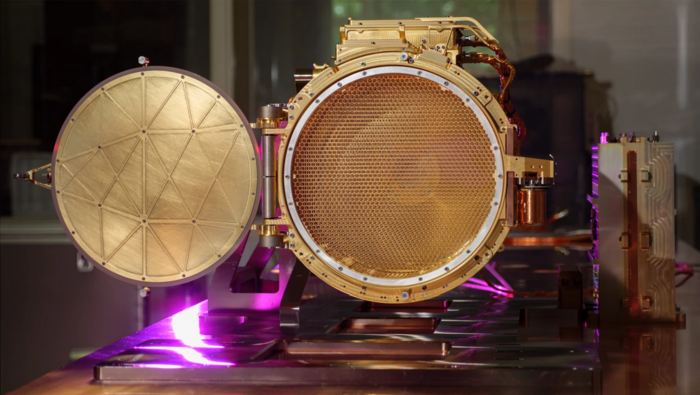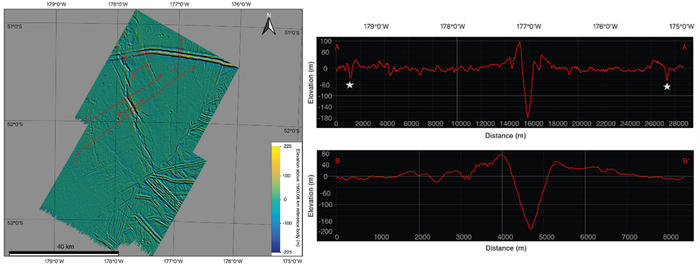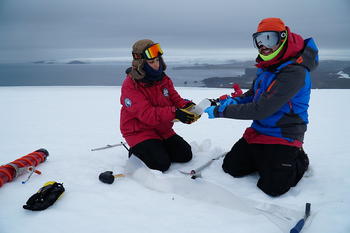Department of Earth Sciences
Service Navigation
The SUrface Dust Analyzer (SUDA) onboard Europa Clipper
The Europa Clipper mission from NASA was launched in 2024 and will arrive in April 2030 in the Jovian system, with the goal of investigating the habitability of the icy ocean moon Europa. It is the first mission entirely designed to conduct a detailed study of Europa, and will conduct 49 close flybys of the moon. The main science objectives of the mission are:
- determine the thickness of Europa’s icy shell, and understand how Europa’s ocean interacts with the surface.
- investigate the composition of Europa’s ocean to determine if it has the ingredients to permit and sustain life.
- study how Europa’s surface features formed and locate any signs of recent activity, such as sliding crust plates or plumes that are venting water into space.
To fulfill these goals, the spacecraft has 9 dedicated science instruments, as well as gravity and radio science tools. One of these instruments is the SUrface Dust Analyzer (SUDA), a mass spectrometer that will analyze small dust grains ejected by (micro)meteorites from the icy surface and possible plume particles ejected from subsurface reservoirs. The dust analyzer will scoop up the ice grains and identify both their chemistry and area of origin. It will offer insight into Europa’s ocean salinity and chemical inventory, including potential organic molecules, thus allowing to determine if Europa’s ocean is suitable for some form of life.
The SUrface Dust Analyzer (SUDA) Flight Model.
Image Credit: From Kempf et al. (2025)
The SUrface Dust Analyzer operation principle. The signal from the grid electrode is used for velocity measurement of the incoming ice grains. Ions are generated by impact of the ice grains on the target, and subsequently accelerated.
Image Credit: From Kempf et al. (2025)
Analogue mass spectra collected at Freie Universität crucial for the Interpretation of SUDA data
To ensure the best possible performance of the SUDA instrument at Europa and a smooth interpretation of its data, calibration of the instrument is required. To this end, laboratory experiments have been performed in the laboratory facility of the Planetary sciences group at Freie Universität Berlin using laser desorption experiments. These experiments simulate the impact ionization taking place in the hypervelocity impacts (velocities > 1km/s) of μm-sized dust particles onto space detectors such as SUDA. This laboratory technique is also heavily used for the analysis of the data of the Cosmic Dust Analyzer from the Cassini mission (the predecessor instrument of SUDA), as it allows the simulation of icy impact ionization spectra with varying impact energy and composition. The analogue mass spectra recorded so far allowed to better understand the salt and organic composition of the ocean of Enceladus. A range of different material relevant for icy ocean moons is currently being investigated, including both inorganic and organic compounds but also more complex samples relevant for astrobiology investigations.
-
microbial material, such as bacteria cells, spores and extracted cell compounds
→ Recent publications by Klenner et al. (2024) have shown that spectral signals from bacteria cells are clearly identifiable by SUDA, even if an ice grain contains much less than one cell. Dannenmann et al. (2023) demonstrated that bacterial biosignatures such as DNA nucleobases are detectable down to ppm concentrations, and also investigated salty matrices with different NaCl concentrations. -
natural samples for terrestrial analogue environments such as Antarctica
-
the products of hydrothermal reactions performed to simulate hydrothermal conditions in Europa or Enceladus interiors
→ A newly developed setup for hydrothermal simulations has been established and recently had successful first results with peptides. -
the products of irradiation experiments simulating the surface conditions on Europa or Enceladus.
The analogue mass spectra recorded in these laboratory experiments are stored in a database for impact ionization mass spectrometers, that will be crucial for the interpretation of SUDA data but also future instruments. More recently, we also investigate the processes of ionization and fragmentation with quantum chemical computations using density functional theory to add theoretical context to impact ionization mass spectrometry.
Digital terrain model (DTM) of Ménec Fossae on Europa, made from Galileo images mosaicked together, and elevation profiles of showing the main depression (depth of ∼200 m and width ∼1 km).
Image Credit: From Matteoni et al. (2023)
Geological interpretation supports geochemical characterization
Furthermore, within the research group at FUB, geological characterization and analyses of selected features of Europa’s surface are being conducted, with high relevance to the overall goals of the Europa Clipper mission. New 3D topographic models of medium- and large-scale surface features have been produced, and the interplay between tectonics and interior processes (such as possible water pockets located at shallow depths within Europa’s ice shell) is studied in detail. Such geological investigations are also of prime importance for interpreting the upcoming SUDA data, as it is possible to estimate the origin location of ejected ice grains with the SUDA instrument (via back-tracking of the grains’ trajectories). Combining SUDA spectral analysis and geological knowledge will allow a detailed geochemical characterization of Europa’s ice and its subsurface ocean. Chaos terrains in particular appear as prime location to better understand the ocean composition, as these locations are composed of recent surface material.
Two Missions – One Goal
Another upcoming space mission to the Jupiter system is the Jupiter Icy Moons Explorer (JUICE), a flagship mission led by the European Space Agency (ESA), launched on 14 April 2023. Its primary goal is to explore Jupiter and its three largest ocean-bearing moons – Ganymede, Europa, and Callisto – with emphasis on their icy shells, subsurface oceans, surface geology, and potential habitability. JUICE will arrive at Jupiter in July 2031 and conduct at least four years of scientific observations, including detailed orbiting of Ganymede. Currently at FUB, comparative studies between Europa and Ganymede on possible similar processes and related surface expressions are undergoing. Several group members are strongly involved on the JANUS-Camerasystem onboard JUICE. These studies are crucial for future synergistic observations between Europa Clipper and JUICE: both spacecrafts will be at the Jupiter system in a similar time frame, thus allowing for unprecedented simultaneous joint observations that will surely allow unique scientific opportunities from both missions.
PARTICIPANTS IN THIS PROJECT:
- Prof. Dr. Fank Postberg (SUDA Co-Investigator)
- Dr. Maryse Napoleoni (SUDA Affiliate)
- Dr. Nozair Khawaja (SUDA Affiliate)
- Dr. Jürgen Schmidt (SUDA Affiliate)
- Dr. Pietro Matteoni (SUDA Affiliate)
- Marie Dannenmann
- Mirandah Ackley
- Thomas O'Sullivan
- Lucía Hortal Sánchez





